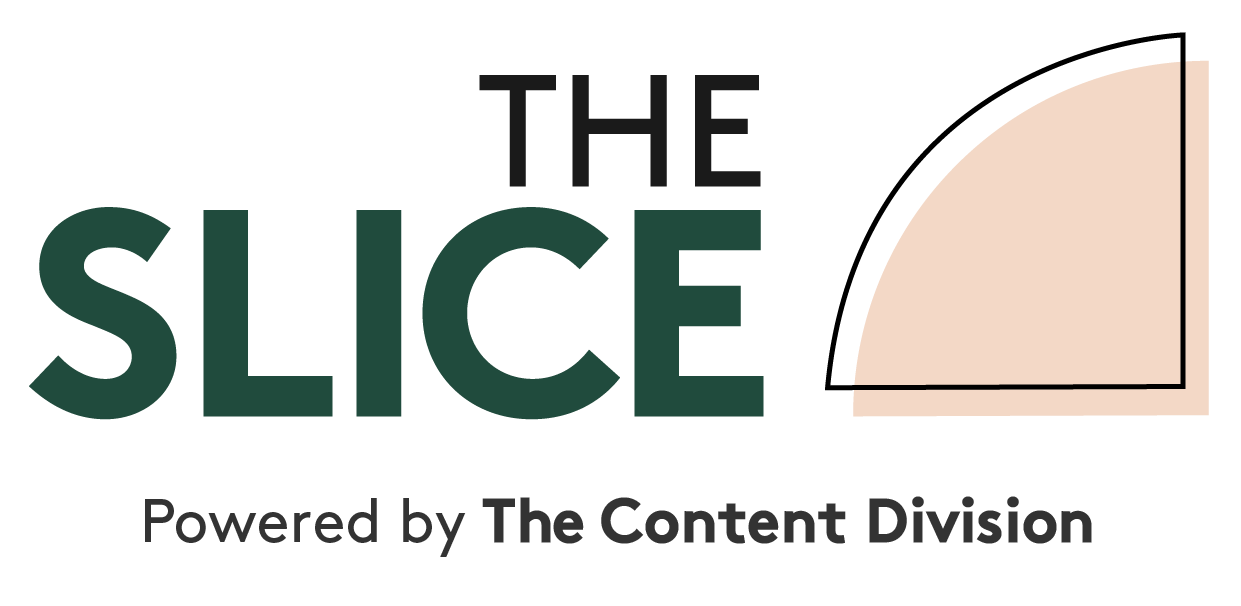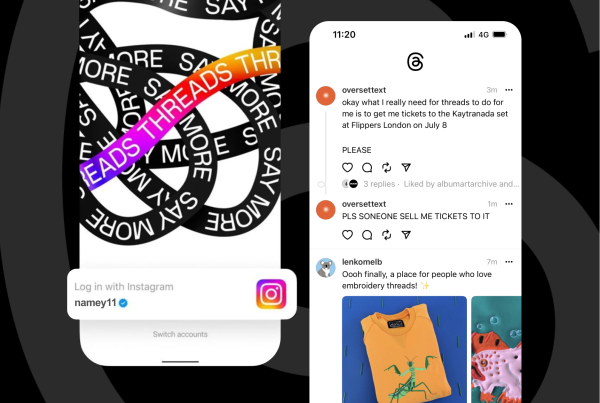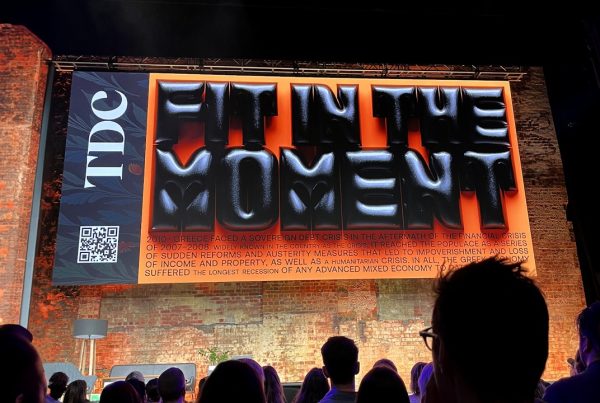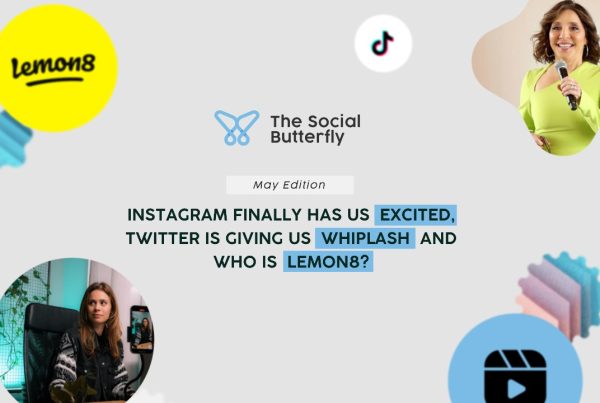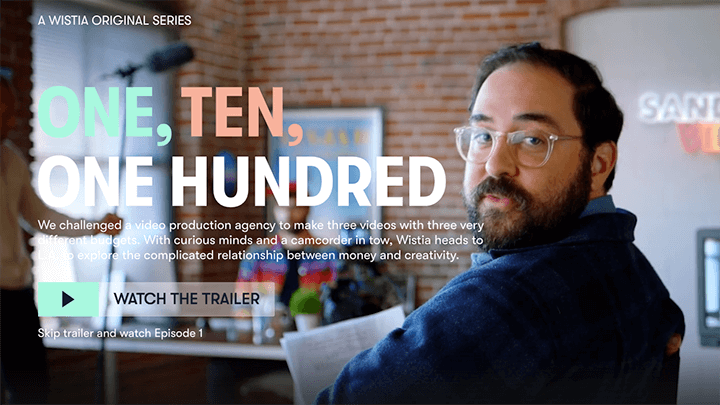
The facts are hard to ignore. In 2018 about 85% of organisations said they were using content marketing in their business, a 16 percentage point increase on the previous year. They also said they were spending about 30% of their marketing budget on creating that content.
I don’t do marketing predictions, but I’ll take a wild stab and say that number probably won’t go backwards in 2019.
So what are you going to do to inspire awareness, product consideration, sales and loyalty for your business in 2019? Here are 9 content marketing plays we reckon could inspire you to do some truly cut-through results-driven marketing in 2019.
One, Ten, One Hundred by Wistia
If you only check out one campaign in this blog, make it this one.
Video technology company Wistia’s new Chrome add-on is called Soapbox. It helps to make your video presentations way more awesome, accessible and measurable. But in launching its new product the team decided to add a marketing experiment to the mix about what kind of video marketing truly cuts through and gets results – the cheap, the mid-range or the big budget. It’s an awesome lesson in storytelling, clever scripting, budget and the constraints the C-suite can put on marketing teams.

TIGHT SHORTS: Wistia’s short video series kills it on a storytelling level.
More impressive is that Wistia Netflixed the shiz out of the experiment and turned it into this – a series that honestly could be a handbook for most SaaS businesses that struggle to get the right voice and cut-through in their marketing. They even published the results for all to see.
The Lesson: Wistia found that a unique voice and audience-focused storytelling generally trumped a big budget when it came to brand and acquisition results. By all means make the benefits of your product or service part of the video narrative but it and your budget are not at the core – that should be reserved for your customers’ emotions, needs and wants.
Grey Matters by Seasons Aged Care
When marketing teams plot their activities across the customer journey (like I know you all do) many skip the awareness or moment of inspiration phase and jump straight down to consideration and conversion activities.
The team at Seasons Aged Care have invested in their full marketing funnel with Grey Matters, a top-funnel content platform that strategically engages their key audience – senior Australians – with high-quality content that resonates, educates, entertains and inspires people to have honest conversations about growing older in Australia.
It also just happens to acquire data the team can use to build relationships with prospective residents and, almost more importantly, their influencers. Not to mention the retargeting and other data source opportunities up for grabs.
The Lesson: In aged care, terrible ads and flyers banging on about independence, freedom and choice just will not do any more. You need to live it and mean it. It’s not cause marketing, it is the literal product you sell.
And it’s not enough to just create content. The rush to quality has begun and the brands that realise it’s about the quality of their stories – not the quantity – will establish cut through with prospective residents long before they need you. And you need to recognise the data opportunities – the database, data sources, remarketing and ongoing nurturing will feed your marketing and sales teams, and they will love you for it.
First Five Years by Goodstart Early Learning
The early years of parenting kids is the Wild West. The guys at non-profit organisation Goodstart Early Learning know this, and are all over it to help new parents juggle the madness.
Its content platform, First Five Years, is a goldmine of knowledge that answers just about every question any parent could think to ask about their little darlings/monsters. The content is categorised simply but beautifully, with plenty of interactive moments making their brand the moment of truth for a lot of parents who would be so desperate to have their questions answered.

Goodstart Early Learning’s Digital Managing Editor Belinda Reilly says the motivation behind the platform is simple.
“The internet is not short of parenting advice, but First Five Years was conceived with the aim of empowering parents with credible information from experts, professionals and educators they can trust, that can also help them extend early learning into the home,” she says.
“The site is supported by Goodstart Early Learning, a not-for-profit social enterprise, which exists purely to improve the lives of children and their families.”
As with Grey Matters, the data would be pretty nice too.
The Lesson: Let your content demonstrate your expertise and answer as many questions as you possibly can for your ideal audience. Then categorise them in a way that makes perfect sense to the readers – too much great content has died painfully because of a terrible user experience or information architecture.
PwC’s Digital Pulse
The most vital thing about making a thought leadership program really work is to actually feature leading thoughts. And PwC have plenty of those.
They have data – mounds of it – and it puts them in the perfect position to turn those numbers into knowledge and insights for others through their Digital Pulse platform. Web traffic? Sure. Brand presence? Definitely a benefit. Showing high-value industry niches just how much you know about transforming their business digitally? Priceless.

The Lesson: In B2B marketing having fuel to feed your website with quality traffic is vital. Every time you drip feed thought leadership and research through to an audience it helps to create moments of trust. And when it counts that leads to a moment of truth – “you are the expert I need for this work”.
Meet Your Shoes by We Are All Birds
There are a lot of terrible videos out there. This is not one of them. And that’s because the guys at shoe company We Are All Birds understand the value of curiosity.
Video marketing is exploding mostly because social media rewards it as a content type – it keeps you on their platform longer. But terrible video does the opposite. Audiences bail out fast unless there’s something there to keep them curious – something educational, entertaining or utility based.
We Are All Birds nail the curiosity gap in this one. The narrative plants a seed and drags you along. And regardless of whether you are entertained or not, you want to see how it ends.
The Lesson: Are your videos just a talking head of you droning on or do you genuinely plant a curiosity in the mind of your audience?
The Gateway by Queensland Exploration Council
This thought leadership program is in its infancy but it does something pretty important for a business that relies on industry members engaging – it creates allies in content creation and promotion.
Each month The Gateway newsletter highlights the opinions and expertise of key experts in the mining exploration and resources industry on niche topics using first-person written pieces. It’s distributed using several different methods and drives highly relevant traffic back to their website, events and messages.
Yes it drives traffic, but as a brand awareness exercise it could not be more pinpoint in involving target audiences in the actual content creation.
The Lesson: A very clever guy named Andy Crestodina puts it this way: “An ally in creation is an ally in promotion.” Involving your target market or clients in your content creation not only makes them a stronger advocate of your business, but also activates their audiences when they inevitably share the content among their networks – most likely including some similar businesses to your clients.
National Storage’s Tips and Hints Blog
A storage company website. Sheds. The place where you dump all the stuff you don’t want at your house. Or that lazy $7.5 million you forgot about.
It doesn’t sound like the most inspiring place to find great content but National Storage’s tips and hints blog is pretty damn cool. It would add some serious search muscle to the company’s website, for sure, but I’d be more excited about the retargeting data available from some great topics that match ingeniously with the different kinds of people who need to store stuff.

The Lesson: Really research and plumb the depths of your content pillars and the topic archaeology within them. You may find some niche audiences that need your help and expertise.
The Blue Room by Bupa
Look. By content standards it’s an oldie. But it is no doubt an epic goodie. Bupa’s The Blue Room blog is almost an archetypical example of everything a content platform should be: audience focused, well written, easy to get around, brilliantly organised and categorised, strategically outstanding and a results machine.
But the thing I love about it is how they integrate it into campaigns and use it to fuel brand research and sentiment. In a recent episode of The Brand Newsroom podcast, the former head of global content at Bupa Matt Allison discussed a few of the results and said more than a quarter of all Australians had engaged with The Blue Room’s content.

Somewhat more impressive are the brand metrics – through their net promoter score and other brand research they found about 80% of people who had engaged with the platform had a positive opinion of Bupa, and a bit over half of people who had used the platform displayed purchase intent. Incredible stuff.
The Lesson: Content for content’s sake is garbage. Integrate it into campaigns. Measure it well. Ask your audiences the right questions. Demonstrate value aligned with business objectives.
Cup Phones by Jack and Dean
This is one for the people out there considering influencer marketing. Sure, you could pay an Instagram model to spruik your product to her legions of clearly pervy and handsy male followers, or you could partner with some incredible content creators and have them put their authentic, audience-focused spin on things.
Skit duo Jack and Dean are an insanely good example of this and their work Cup Phones for Honor Smartphones is bloody funny, super engaging and truly memorable.
The Lesson: The length of your content is truly irrelevant, despite the push for videos to be shorter so they capture attention. When you think about it, that actually makes no sense at all. Resonance is better than reach – that’s where the real action happens. And that means keeping people curious and engaged for as long as the content is great.
